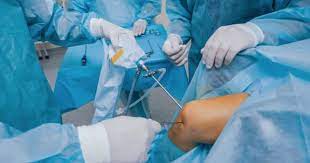Physical therapy plays a crucial role in the recovery process after knee replacement surgery. It helps patients regain mobility, strength, and function in the knee, and it is essential for a successful rehabilitation. Here are several ways physical therapy aids in the recovery process:
1. Pain Management
- Techniques and Exercises: Physical therapists use various techniques such as ice, heat, and transcutaneous electrical nerve stimulation (TENS) to manage pain. They also guide patients through exercises that help reduce pain by improving circulation and promoting healing.
- Education: Therapists educate patients on how to manage pain through proper positioning, use of assistive devices, and activity modification.
2. Restoring Range of Motion
- Flexibility Exercises: Physical therapy includes specific exercises designed to improve flexibility and restore the knee's range of motion. This is critical in preventing stiffness and ensuring the knee can bend and straighten effectively.
- Continuous Passive Motion (CPM) Machines: Sometimes, CPM machines are used in the early stages to gently move the knee, helping to maintain and improve range of motion without requiring active movement from the patient.
3. Strengthening Muscles
- Strength Training: Exercises focus on strengthening the muscles around the knee, including the quadriceps, hamstrings, and calf muscles. Stronger muscles provide better support and stability to the knee joint.
- Progressive Resistance: Therapists progressively increase the resistance and intensity of exercises as the patient’s strength improves, ensuring continuous progress.
4. Improving Mobility and Function
- Gait Training: Physical therapists help patients relearn how to walk correctly with their new knee. This includes using assistive devices like walkers or crutches initially and then progressing to walking without aids.
- Functional Exercises: Therapy includes exercises that mimic daily activities, such as climbing stairs, sitting and standing from a chair, and other movements that patients need to perform in their daily lives.
5. Reducing Swelling and Inflammation
- Manual Therapy: Techniques like massage, lymphatic drainage, and other hands-on methods help reduce swelling and improve circulation.
- Compression and Elevation: Therapists teach patients how to use compression garments and proper elevation techniques to manage swelling.
6. Preventing Complications
- Education and Monitoring: Physical therapists educate patients on signs of complications like blood clots, infections, or issues with the prosthesis. Regular monitoring during therapy sessions ensures any problems are caught early.
- Exercise Protocols: Following a structured exercise program helps prevent complications such as joint stiffness, muscle atrophy, and loss of function.
7. Personalized Rehabilitation Plans
- Tailored Programs: Each patient receives a personalized rehabilitation plan based on their specific needs, goals, and progress. This individualized approach ensures that the therapy is effective and addresses any unique challenges the patient may face.
- Goal Setting: Therapists work with patients to set realistic and achievable goals, providing motivation and a clear path to recovery.
8. Long-term Maintenance and Support
- Home Exercise Programs: Therapists provide patients with exercises to continue at home, ensuring they maintain the gains achieved during therapy.
- Ongoing Support: Regular follow-up sessions and support from the therapy team help patients stay on track and address any ongoing issues.
Conclusion
Physical therapy is essential after knee replacement surgery to ensure a successful recovery. It helps manage pain, restore range of motion, strengthen muscles, improve mobility, reduce swelling, prevent complications, and provide personalized rehabilitation plans. With the guidance and support of physical therapists, patients can achieve better outcomes, faster recovery times, and a return to their normal activities.





Comments